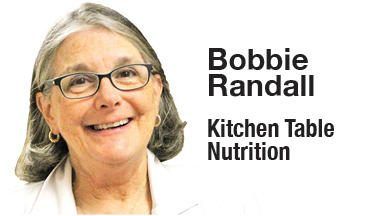Intelligent guessing and swallowing decisions
- col-bobbie-randall
- February 16, 2024
- 793
Anyone who has ever looked in a vehicle’s rearview mirror knows “Objects are closer than they appear.” While driving, this is a warning that perception and reality are different. This concept also is true in controlling what is eaten throughout the day.
The perception of what is swallowed and the reality of the size of a snack or meal can be very different. When I hear someone say eating healthy is all about eating in moderation, I hear fingernails on a chalkboard. The word moderation is different for everyone.
One of the secrets of weight control in the 21st century is centered on what we believe a serving size is and the actual recommended serving size. While discussing portion sizes and popular serving sizes, most people laugh at me when I tell them they need to master intelligent guessing. Intelligent guessing is an inaccurate science that some people have perfected to control their intake.
The guidelines for healthy eating revolve around 1/2 cup servings of most foods. The key is to learn to juggle food choices based on 1/2 cup allowances.
Intelligent guessing requires learning how to eyeball accurate portion sizes. Manually use a measuring cup for a few days, especially for starches such as potatoes, rice, pasta and ice cream. A 1/2 cup portion is similar in size to a tennis ball cut in half or a small juice glass.
After a few days of measuring food, intelligent guessing begins to formulate in your mind. Putting appropriate portion sizes of food on plates before serving is an effective way to control overeating. Family-style dining is too tempting to overconsume.
Many think America’s obesity epidemic escalated with super helpings of restaurant foods. A small order of fries is double a 1/2 cup serving, and a biggie order can be up to six portions.
Are the fast-food chains guilty of overfeeding Americans? No, it is too easy to blame an entire industry for extra pounds. It is the swallowing decisions of healthy citizens that affect their body size.
The fast-food restaurants are not guilty of overfeeding; Americans are guilty of over-swallowing. Learning the art of intelligent guessing appropriate portion sizes is one of the main issues in maintaining a healthy weight. Over-swallowing usually results in gaining weight and thus costing the consumer a few larger clothing sizes. Eyeballing a 1/2 cup serving can make a difference between eating enough and eating too much.
If you have been in the habit of biggie-sizing most of your meals, try to practice intelligent guessing. Cutting portion sizes of foods decreases calories. Manually measuring your food self-teaches portion sizes to avoid overeating.
If snacking is a problem, portion out a serving in a separate bowl or bag and tape the snack bag shut. Using smaller plates and bowls also can help with portion control. Although not an exact science, intelligent guessing can be effective in controlling food intake.
A fact from your car’s rearview mirror reminds you that portions are bigger than they appear. Controlling intake with intelligent guessing is more mindful than eating in moderation.
Bobbie Randall is a registered, licensed Dietitian. Email her at bobbierandallrd@gmail.com.

